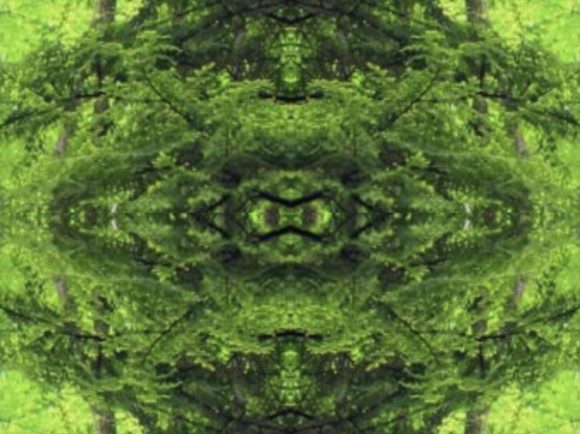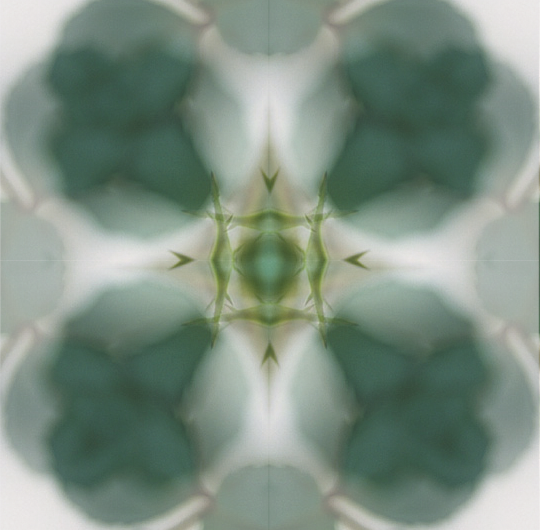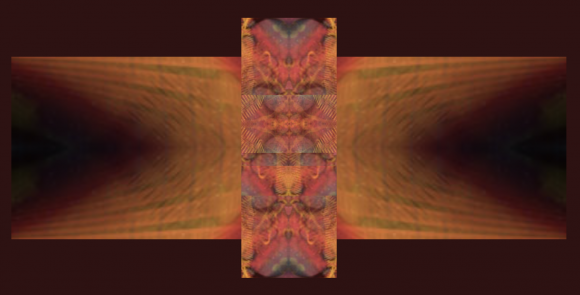I have written occasionally about mysticism, and mentioned that Jung is best understood as doing something like mystically inspired philosophy. This is not meant as criticism: both mysticism and philosophy are age-old, and very necessary human activities. There is a danger, however, when they get misleadingly framed as something else — as Jung often does, when he tries to make what he’s doing appear as a kind of revolutionary science. But I think in truth he himself knew better.

In his autobiography, Jung recalls about the period which shaped his views of the unconscious, when he was engaging with the fantasies that later came to make up the Red Book:
From the beginning I had conceived my voluntary confrontation with the unconscious as a scientific experiment which I myself was conducting and in whose outcome I was vitally interested. […] When I was writing down these fantasies, I once asked myself, “What am I really doing? Certainly this has nothing to do with science. But then what is it?” Whereupon a voice within me said, “It is art.” (MDR, 213, 221)
Jung then goes on to explain that he declined to accept the idea that it was art as well. (Equipped with later terminology, he’d identify it as a form of “active imagination”, a specific way of doing self-analysis.) The important takeaway for my purposes here, however, is that, contrary to his purported stance in his published work, Jung was under no illusion here to be doing objective science.
We should not assimilate mysticism to science: it is a human activity, not directed at explanation and prediction of phenomena in the external world (as physics, biology, sociology, psychology, … are), but rather at the expression of meaning and interpretation of what happens in the spirit, the soul, and the mind. In this regard, it does indeed resemble art (poetry, music, peinture, or sculpture) more than than science.
But mysticism principally uses words — mostly in writing —, and so also has a resemblance to philosophical and (narrative) literary expression. Yet it is different from these: philosophy is the art of reasoning (which includes logic, at its heart, but also semantic analysis and methodological reflection); sound reasoning is difficult and requires skill and constant interaction between practitioners in order to weed out mistakes and weaknesses (in this respect, philosophy shares its purpose with the methods of empirical science, which aim at the laws of nature in the same way in which philosophy aims at correct reasoning); mysticism is an exploration of a certain, open-ended kind of experience, and therefore must constantly bend, break, and circumvent the very routes that philosophy aims to establish, thereby widening the field. Exploration, and subsequent securing and developing an area can be seen as a two aspects of the same broad movement. In this sense, philosophy and mysticism are complementary. (But to be complementary, they have to be different.) Mysticism thus continuously displays a certain avoidance and subversion of the sound reasoning that philosophy tries to achieve. (Sometimes, this is expressed by pointing out that mysticism principally deals in paradox.)
Literary expression (as in novels, stories, …) proceeds by creating fictional worlds and characters. Mysticism produces symbols (images, personifications, …) which are superficially similar, but at the core different from fictions. Fictions operate on the same plane as philosophical laws of reasoning: they are carved out of the unknown in an evolutionary process and developed in a cultural environment which supports the activity, and preserves and upholds the best results. Symbols, in contrast, are early anchors for something not yet capable of being worked in this way. They can be seen as vague and tentative diagrams rather than documents crafted in engagement with established forms, styles, and conventions.
Mysticism has proceeded throughout history in (more or less clear) contradistinction to literature, philosophy, and science (as well as magic, which is not scientific, but shares its goal of prediction and manipulation of events in the external world). It can be traced as mystical strands in all the major religions: that includes Indian Yogi, Sufism, Kabbalism, Catholic mystics (such as John of the Cross). In the later 20th century, where intellectual development has been decoupled from religions, we may find it in the ‘high weirdness’ (Erik Davies, High Weirdness) of the 70s or the eclectic ‘new age’ culture of the 80s and onwards (J. R. Haule, Perils of the Soul). But the constellation is not new: the 2nd century has seen a similar crystallization of mysticism divorced from specific religion, and produced e.g. Gnosticism.
Seen before this background, Jung is a mystic, too. His essays do not give sound reasoning pride of place, but he also does not engage in fiction. He rarely produces his own symbols: consistent with the historicist slant of our age, he rather collects a plethora of old and received symbolism. But he did crystallize a few original symbols (mostly in the form of a specific subset of symbolism, namely: personalizations) which had some cultural influence (such as the Shadow and the Anima). Jung’s views are also not scientific. It’s true that he would insist his views were based on ‘experience’, but that always means unique and individual experiences, not the stable and repeatable observations called for in the empirical methods of science. Jung would also seamlessly switch from presentation of evidence to simply amassing references to cultural artifacts across the ages (which do not constitute evidence, however compelling they may have seemed to him, personally). Putting personally compelling experience over objectively verifiable evidence is a sign of mysticism, precisely in contrast to empiricism.
But perhaps most important of all: the source of Jung’s views was not an abstraction or generalization of observed patterns in the empirical material of his cases (even thought he often claims it was). It was, rather, a unique, personal, and highly subjective experience of connecting with “the unconscious”, which he then proceeded to interpret (not abstract from). And this is precisely the difference between views based on empirical regularities and views based on a strong individual experience (mysticism). Murray Stein summarizes it here:
Jung formulated his theory of the anima and animus, the archetypal structures behind this invasion of libido [during the “midlife-crisis”], during his own period of midlife liminality […]. His views on these archetypal daimons and on their overwhelming powers and influence over consciousness were not the outgrowth of observing adolescents or the product of objective academic research. They were deeply rooted in his own intense anima experiences and in similar experiences of the adults with whom he was working analytically at the time.
Murray Stein, In Midlife, 93.
We’ve had some inkling of that from Jung’s autobiography (Memories, Dreams, Reflections), but the full extent has only now been known for a few years since the publication of the Red Book (and will doubtless be deepened the more material gets published from his lectures, letters, case materials etc.). Likewise, in his correspondence with Pauli he draws the contrast very clearly:
Während […] in der Naturwissenschaft das Gesetz ausschliesslich als aus der Erfahrung abgeleitete Abstraktion erscheint, begegnen wir in der Psychologie einem schon fertigen, nach allem Ermessen a priori vorhandenem Bild, das spontan z.B. in Träumen auftritt und eine autonome Numinosität besitzt, wie wenn Jemand schon im Voraus mit Autorität erklärt hätte: “Was jetzt kommt, ist von grosser Bedeutung.” Dies scheint mir in eklatantem Gegensatz zu dem a posteriori-Charakter des Naturgesetzes zu stehen. (PJB 72)
Part of the challenge of reading Jung, therefore, is to not get distracted (and not allow the understanding to be distorted) by his framing, in his published works, of his ideas as gathered from empirical observation, rather than mystical experience.



